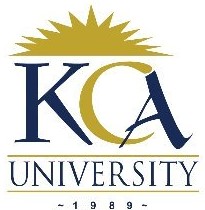 UNIVERSITY EXAMINATIONS: 2014/2015
UNIVERSITY EXAMINATIONS: 2014/2015
ORDINARY EXAMINATION FOR THE BACHELOR OF SCIENCE
IN INFORMATION TECHNOLOGY
BBIT 104 BIT 1205 SYSTEMS ANALYSIS AND DESIGN
DATE: APRIL, 2015 TIME: 2 HOURS
INSTRUCTIONS: Answer Question ONE and any other TWO
QUESTION ONE
a) Define the following terms (4 marks)
i) Data
ii) Information
iii) System
iv) Information System Analysis and Design
b) Describe the distinguishing feature(s) of each of the following information systems
(6 marks)
i) Transaction Processing Systems (TPS)
ii) Management Information Systems (MIS)
iii) Decision Support Systems (DSS)
c) As a systems analyst you should be highly skilled in order to perform your
professional roles perfectly. Analyze the following table by matching each skill of the
system analyst with the appropriate functional role. (5 marks)

i) Analytical Skills A) Interviewing, Listening, Written and Oral presentations
ii) Management Skills B) Problem identification, analyzing, and solving
iii) Technical skills C) Requires continuous learning and keeping skills up-to-date
iv) Interpersonal skills D) Working alone and with a team and facilitating groups
v) Communication skills E) Decomposing project into independent tasks and
determining relationships between tasks
d) A system development project is about to be undertaken for a client organization that
is currently running its business operations entirely manually.
As a consultant systems analyst, analyze each of the following methodologies by
giving three characteristics of project that would make you select the methodology.
(9 marks)

e) Construct a decision table based on the following statements. Use the sketch blank
table below (6 marks)

In a wholesale business;
– No discount is given if the customer pays after 2 weeks or the order is less than
$20
– If the order is less than $50, the customer gets a 4% discount
– If the order is at least $50, the customer gets a 5% discount
Conditions
Actions
QUESTION TWO
a) State two advantage and one disadvantage for each of the following methods of
requirements elicitation (6 marks)
i) Questionnare
ii) Interview
iii) On-site observation
b) Explain the seven phases of the systems development life cycle (SDLC) highlighting
the major activities and deliverables at each stage (14 marks)
QUESTION THREE
a) Differentiate among technical, operational, and economic feasibility. (3 marks)
b) Listed below are possible problems or opportunities when considering the feasibility of
a new project. As a professional systems analyst, analyze the table by accordingly
indicating(YES/NO) if the problem or opportunity is economic, technical, operational,
schedule, legal or political.(*Problem or opportunity may fulfill several of these
factors*) (8 marks)

The system will process the year-end accounting.
The staff turnover in the IT department has
increased
Customers’ credit card information will be stored
The new distributed system will replace a
centralized one.
Users disagree about the functionality needed
Management predicts a great increase in user
efficiency.
Labour unions are threatening to strike against the
new system
Users need extensive training.
c) Using the information in table shown below, assuming that the project team will work
a standard working week (5 working days in 1 week) and that all tasks will start as
soon as possible:
(i) Determine the critical path of the project (3 marks)
(ii) Calculate the planned duration of the project in weeks (3 marks)
(iii) Identify any non-critical tasks and the float (free slack) on each. (3 marks)

QUESTION FOUR
a) i) Highlight the general strategy an analyst should use to gather information
(3 marks)
ii) Give three main sources of information of an organization (3 marks)
b) Differentiate between logical system diagrams and physical system diagrams.
(4 marks)
c) Construct an entity relationship diagram based only on the following information. The
information describes the functional transactions at PonaTwakupenda nursing home
where patients recover from an illness or an operation. (10 marks)
– When a patient is admitted, the patient is assigned a room and a nurse.
– The patients assigned to a nurse can be in any room.
– Rooms can have more than one patient.
– A nurse looks after several patients.
– A patient has at least one doctor.
– Doctors each have more than one patient.
– Doctors may subscribe medications to their patients. Each prescription is for a
specific medication, for a specific dosage and with specific instructions.
– A patient may take more than one medication.
– Only the nurse assigned to the patient gives medications to the patient.
– There are no relationships between nurses and doctors (at least as far as this
assignment is concerned) nor between nurses and rooms.
QUESTION FIVE
a) State four objectives of system tests (4 marks)
b) IT projects may fail for one or more reasons. Give two reasons for:
i) Failure in product quality (2 marks)
ii) Failure in IT team productivity. (2 marks)
c) i) Define the term physical DFD in the context of systems analysis and design
(2 marks)
iii) Describe the role and usefulness of DFD as a systems documentation aid
(3 marks)
d) Mambo-Leo KarHire is a firm that deals with renting cars and trucks to individuals
and to other businesses. The systems analyst working to develop a rental system for
Mambo-Leo KarHire have drawn DFD shown below.

Later, at a meeting with clients the systems analyst learns the following:
(i) Rental agreements with individuals renting vehicles are quite different from
agreements with businesses renting vehicles (they carry different information);
– Individuals renting a vehicle must pay when they return the vehicle
– Businesses renting a vehicle pay to an Accounts Receivable system (it already
exists and is not in the scope for this system) and this rental system just sends
the rental agreement information to that Accounts Receivable system
ii) Managers not only set rental rates, but they also change them from time to time
As a qualified professional systems analyst, redraw the DFD to reflect the new
requirements (7 marks)
